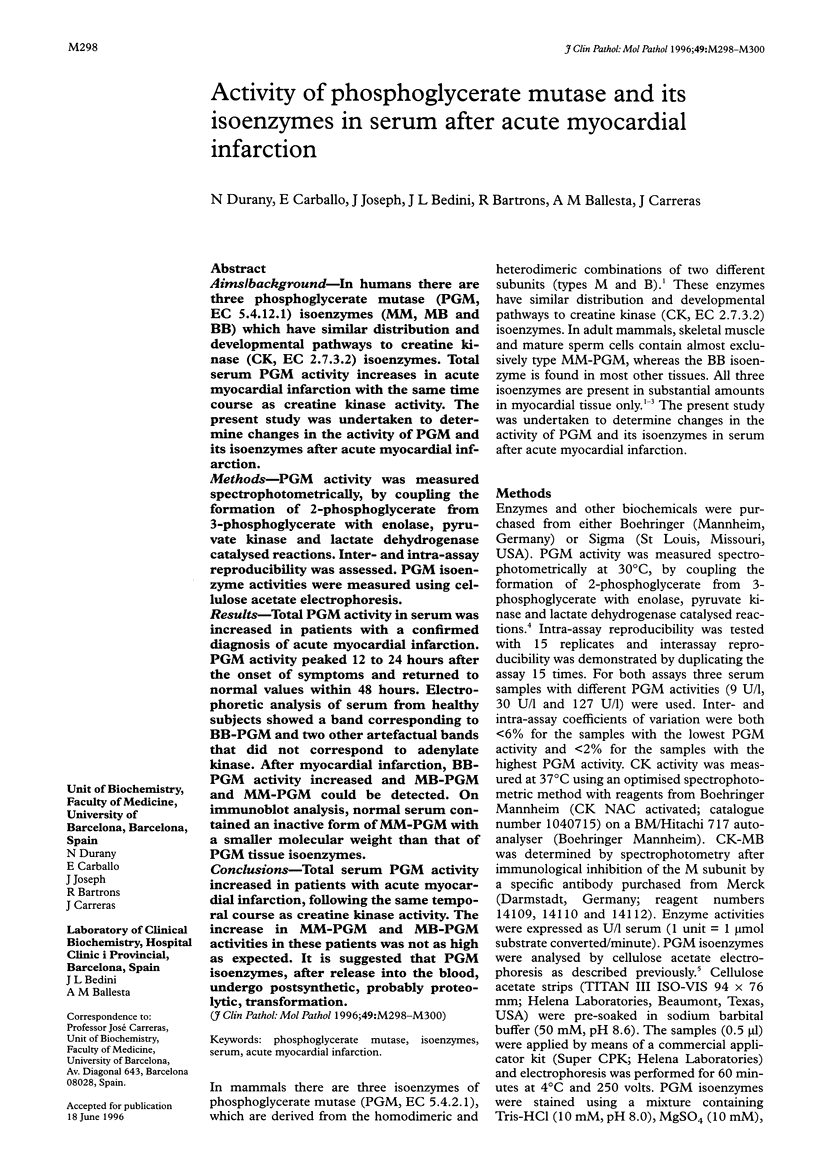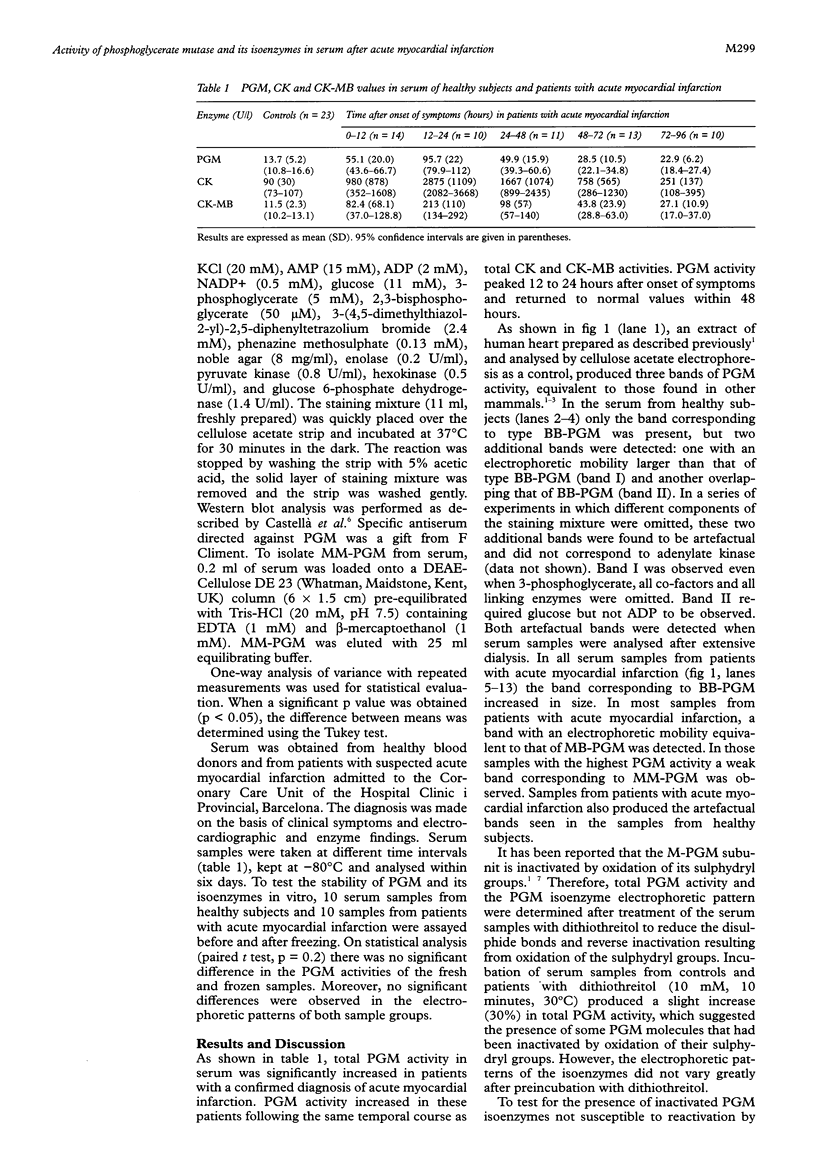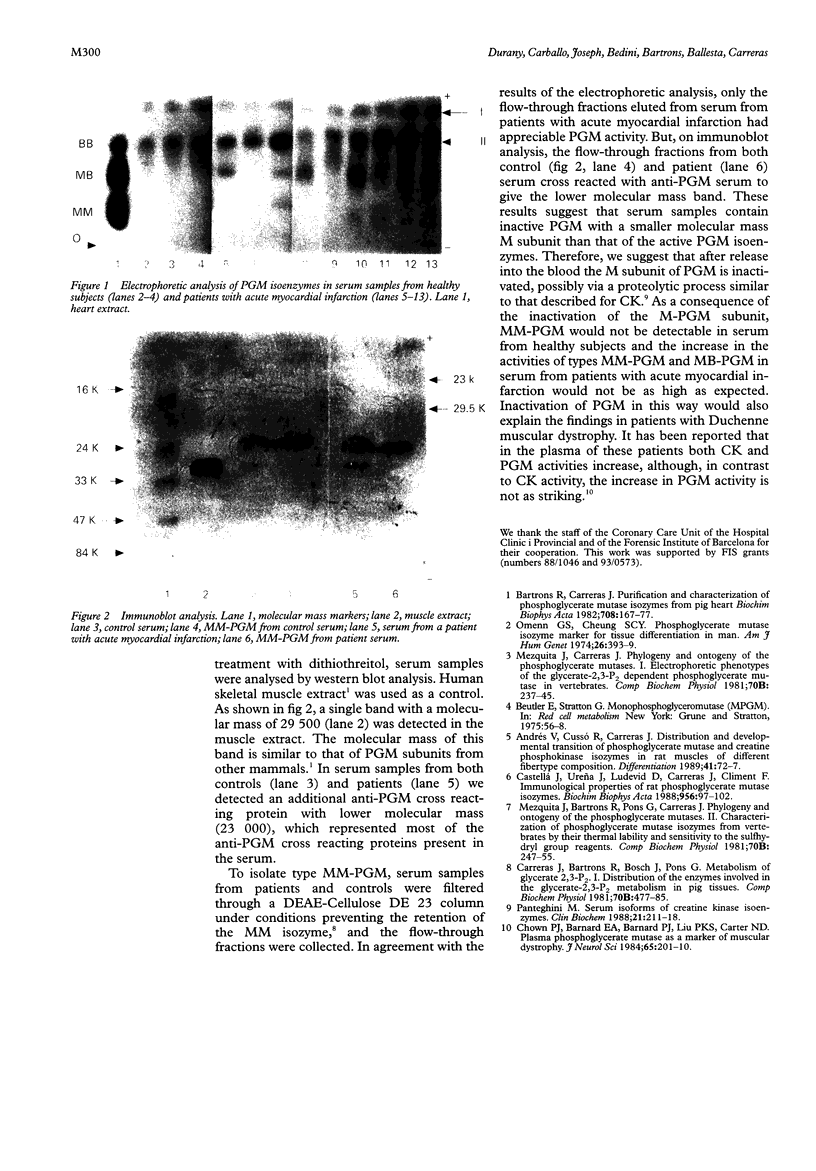Abstract
Aims/background—In humans there are three phosphoglycerate mutase (PGM, EC 5.4.12.1) isoenzymes (MM, MB and BB) which have similar distribution and developmental pathways to creatine kinase (CK, EC 2.7.3.2) isoenzymes. Total serum PGM activity increases in acute myocardial infarction with the same time course as creatine kinase activity. The present study was undertaken to determine changes in the activity of PGM and its isoenzymes after acute myocardial infarction.
Methods—PGM activity was measured spectrophotometrically, by coupling the formation of 2-phosphoglycerate from 3-phosphoglycerate with enolase, pyruvate kinase and lactate dehydrogenase catalysed reactions. Inter- and intra-assay reproducibility was assessed. PGM isoenzyme activities were measured using cellulose acetate electrophoresis.
Results—Total PGM activity in serum was increased in patients with a confirmed diagnosis of acute myocardial infarction. PGM activity peaked 12 to 24 hours after the onset of symptoms and returned to normal values within 48 hours. Electrophoretic analysis of serum from healthy subjects showed a band corresponding to BB-PGM and two other artefactual bands that did not correspond to adenylate kinase. After myocardial infarction, BB-PGM activity increased and MB-PGM and MM-PGM could be detected. On immunoblot analysis, normal serum contained an inactive form of MM-PGM with a smaller molecular weight than that of PGM tissue isoenzymes.
Conclusions—Total serum PGM activity increased in patients with acute myocardial infarction, following the same temporal course as creatine kinase activity. The increase in MM-PGM and MB-PGM activities in these patients was not as high as expected. It is suggested that PGM isoenzymes, after release into the blood, undergo postsynthetic, probably proteolytic, transformation.
Keywords: phosphoglycerate mutase
Keywords: isoenzymes
Keywords: serum
Keywords: acute myocardial infarction
Full text
PDF


Images in this article
Selected References
These references are in PubMed. This may not be the complete list of references from this article.
- Bartrons R., Carreras J. Purification and characterization of phosphoglycerate mutase isozymes from pig heart. Biochim Biophys Acta. 1982 Nov 9;708(2):167–177. doi: 10.1016/0167-4838(82)90217-5. [DOI] [PubMed] [Google Scholar]
- Castellá J., Ureña J., Ludevid D., Carreras J., Climent F. Immunological properties of rat phosphoglycerate mutase isozymes. Biochim Biophys Acta. 1988 Sep 21;956(2):97–102. doi: 10.1016/0167-4838(88)90254-3. [DOI] [PubMed] [Google Scholar]
- Chown P. J., Barnard E. A., Barnard P. J., Liu P. K., Carter N. D. Plasma phosphoglycerate mutase as a marker of muscular dystrophy. J Neurol Sci. 1984 Aug;65(2):201–210. doi: 10.1016/0022-510x(84)90084-4. [DOI] [PubMed] [Google Scholar]
- Omenn G. S., Cheung S. C. Phosphoglycerate mutase isozyme marker for tissue differentiation in man. Am J Hum Genet. 1974 May;26(3):393–399. [PMC free article] [PubMed] [Google Scholar]




